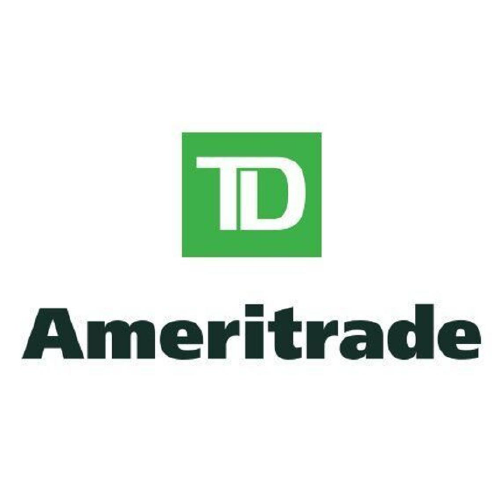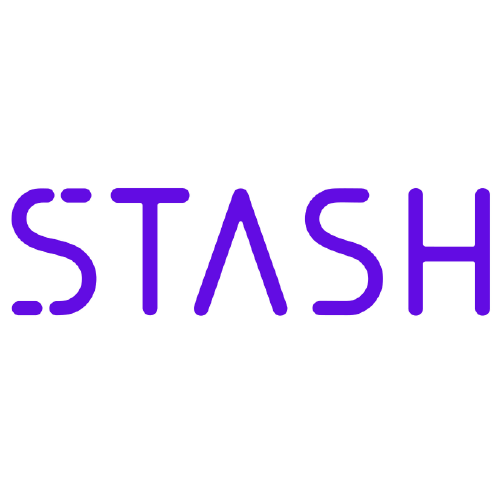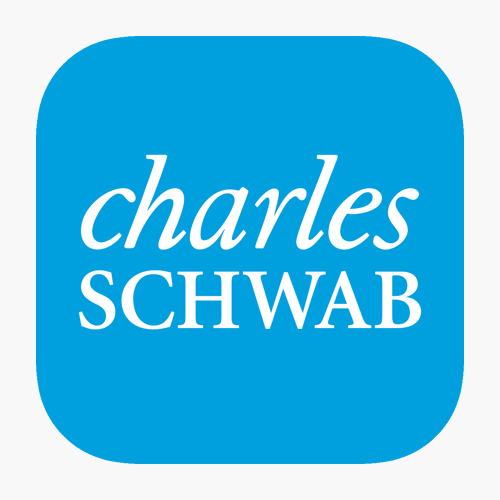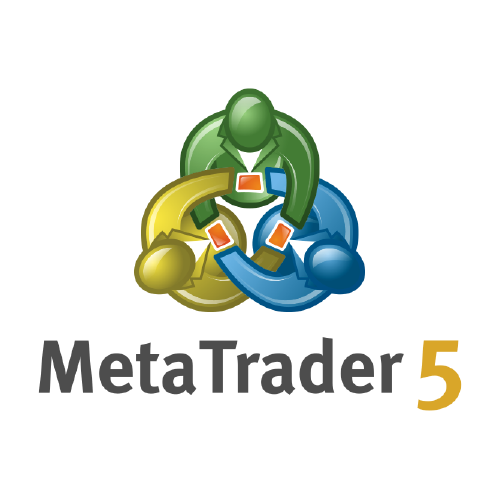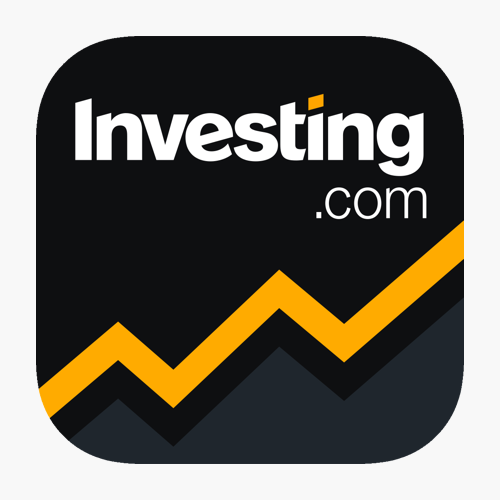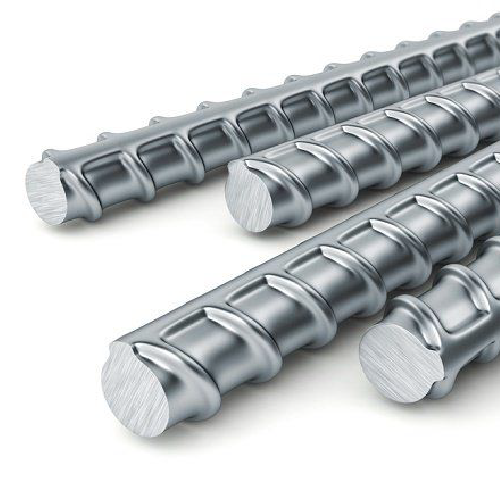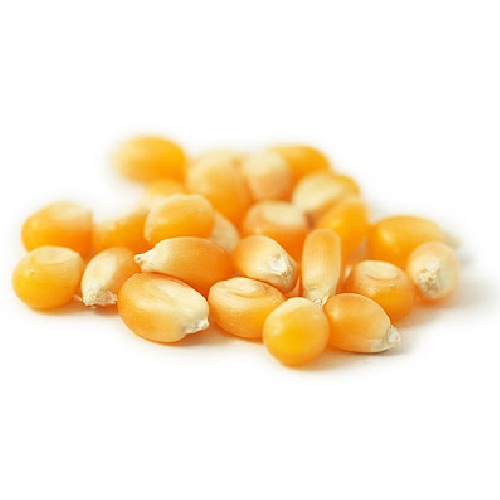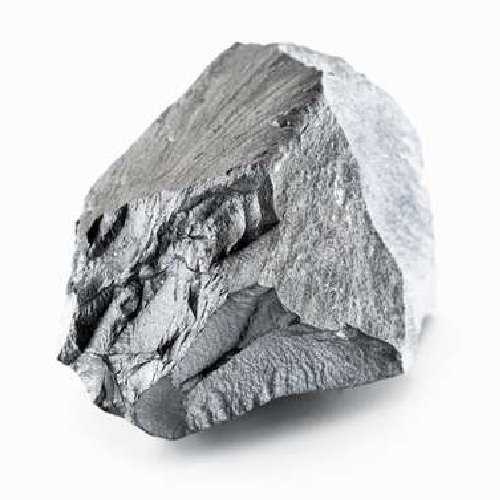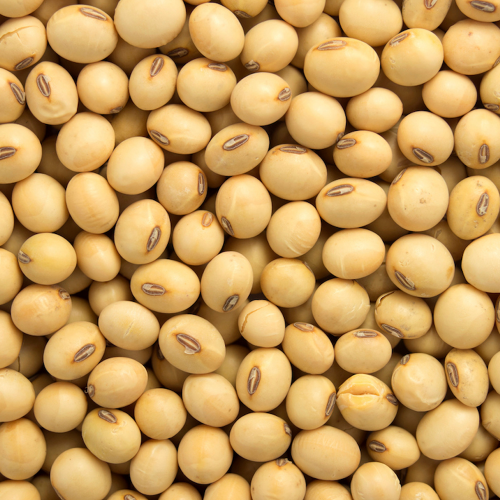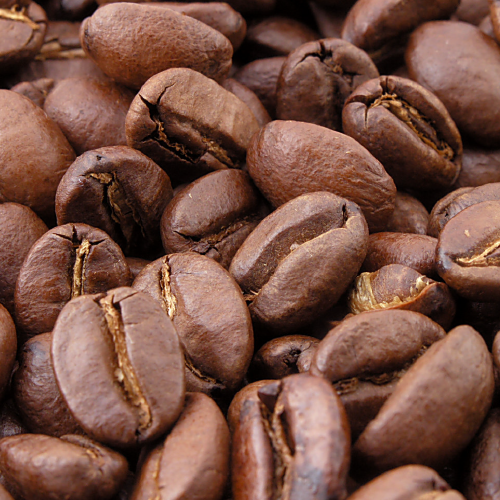
Options Brokers
- What Are Options?
- Key Facts:
- What Are the Advantages of Options Trading?
- What Are the Disadvantages of Options?
- How to Compare Option Brokers
- Are They Properly Regulated and Monitored by the FCA?
- Buying and Selling
- Rate of Commission
- Option Strategies
- Extra Features
- What Are Paper Options?
- Who Are the Top Options Brokers in the UK?
- 1. Webull
- 2. Tastyworks
- 3. IG
- 4. Saxo
- 5. Hargreaves Lansdown
- 6. Interactive Brokers
- 7. Degiro
- 8. Fineco
- Final Thoughts
While options trading can seem somewhat overwhelming when first starting out, the fact is that once you have an insight into how the process works, it becomes far simpler and easier to understand.
Usually, investor portfolios utilize a range of asset classes, including stocks, bonds and mutual funds. Options act as another form of asset type, and when utilized correctly, they can offer a wide range of investment benefits.
What Are Options?
Options are a form of contract that allow the buyer of the contract to buy or sell an item at a set price.
An option buyer is charged an amount known as a ‘premium’ by the seller for the right to purchase the product at a set price. If market prices are seen as being unfavorable for options holders, they will allow the option to expire, which ensures that any losses are not higher than the premium for the product.
In comparison, it is the option sellers who take on the greatest level of risk compared to those buying the options, which is why a premium is always set.
Options tend to be split into two different options types known as ‘call’ and ‘put’ options.
When it comes to a call option, the person buying the option contract purchases the right – but not the obligation – to buy the item in the future at a set price, known as the ‘exercise price’ or the ‘strike price’ on or before the contract expires.
Whereas, when it comes to a put option, the buyer is guaranteed the right – but again, not the obligation – to sell the asset at some point in the future, on or before the end date, at the agreed price.
There are four ways that you can trade options, these are:
- Buying calls
- Selling calls
- Buying puts
- Selling puts
People who buy options are known as ‘holders’ and people who sell options are referred to as ‘writers of options’.
When it comes to options, call holders and put holders are under no obligation to buy or sell; they have the choice to use their rights how they see fit. This helps to limit the risk for buyers.
Whereas, call writers and put writers are in a position where they are obligated to sell if the option expires. This means that the risks for call and put writers tends to be higher than for call and put holders.
Key Facts:
- An option is simply a contract that gives the buyer the right to buy or sell the asset at a set price on or before a certain date.
- People tend to use options for income trading, to hedge risk or to speculate.
- Options are called derivatives as their value comes from the underlying asset being traded.
Options are part of a set of securities called derivatives.
What it’s important to understand about derivatives is the fact that the price of the derivative is derived – or dependent on – something else.
When it comes to options, these are derivatives of something known as ‘financial securities’ – the price of an option depends on the value of another asset. Some examples of this kind of derivative include Futures Investments, for instance.
Options are able to be purchased in the same way as most other asset types, through brokerage investment accounts.
Of course, it’s also important to bear in mind the fact that, like all trading, options investing involves a certain level of risk. It’s essential that the investor is aware of these risks before choosing to make their investment.
The Best Trading Platforms
Let’s take a look at the best trading to earn more.
1. Liteforex
Best for: Learning from others
Liteforex is one of the most popular online reliable brokers over the world. Over the past 15 years, it has developed a strong reputation for beginners and experienced investors alike, has a minimum $100 deposit.
The Liteforex app aims to use easy for every clients. It is available on Google Play and the App Store and allows you to move seamlessly between devices.
It’s innovative features include:
- Pre-programmed one-click trading
- Copy Trader – Copy the trades of others in real-time
- Its own social networking platform
- Pre provided investment strategies which they call Copy Portfolios
The app boasts the ability to allow you to place online trades even if the trading platform is down.
The information is being presented without consideration of the investment objectives, risk tolerance, or financial circumstances of any specific investor and might not be suitable for all investors.
2. FXTM
The FXTM Platform itself is intuitive and easy to use, suitable for those just getting into trading and those more experienced alike.
It is designed to offer a full replication of an institutional trading environment including depth of market.
With advanced risk management and order functionality, this is a detailed platform for trading stocks.
The FXTM app offers a premium range of order types, with advanced technical analysis tools.
You can set up push and email notifications for the important things that you want to know in relation to your stock trading needs – such as price alerts and trade statistics.
Within the app, you can:
- Complete a range of order types
- Work with all your accounts in one app
- Understand detailed trade analysis
- Review detailed order tickets – base currency dollar value and pip distance
As a platform, there are comprehensive educational videos and explanations of symbols, so you can find optimized processing for expert advisors and indicators.
The information is being presented without consideration of the investment objectives, risk tolerance, or financial circumstances of any specific investor and might not be suitable for all investors.
3. FBS
Best for: CFDs
This app is designed for those wanting to trade outside of the US. It is considered one of the best for CFDs on shares and has a minimum $100 deposit.
There are low trading fees but considerable fees for inactive users.
The educational section is average, as are the research tools. However, the app is easy to use overall.
This app is recommended for those familiar with CFDs and who are actively trading. Reviews of the app show that users like the:
- Account-opening process
- Deposit and withdrawal features
- Customer service
- Actual trading platform
The information is being presented without consideration of the investment objectives, risk tolerance, or financial circumstances of any specific investor and might not be suitable for all investors.
What Are the Advantages of Options Trading?
There are a range of advantages of choosing to trade options.
Options are known as being a powerful asset as they offer a fantastic route to enhancing and diversifying a person’s portfolio, this is done through increased income, protection and also leverage.
Depending on what the goal of the options trader is, there is normally a suitable options scenario that’s an appropriate fit for the trader’s goal.
For instance, in the example of needing to hedge against a stock market that is declining, options can be used as a means of limiting downside losses.
Options trading can also be used as a means of creating a regular income. In addition to this, options can also be utilized for speculative reasons, such as to wager on the direction in which a stock will go.
Key advantages of options trading include:
- Options are extremely cheap to trade
- You can get options on and off an exchange
- The risk of options is limited to the premium amount agreed
- There are high potential returns in relation to the level of risk
- There are various strategies to utilize and speculate on the volatility of the investment and movement of price
What Are the Disadvantages of Options?
As noted above, there are a wide range of advantages of options trading, with a range of financial rewards available, but it is important to understand that there are still a number of drawbacks.
Options trading offers less liquidity which can make it tricky for a trader to enter or leave the trade.
It’s also important to be aware that options trading can be more expensive than some other forms of trading, such as when compared to futures or stock trading, for instance. However, that being said, there are discount brokers who are able to offer lower rates, but for the most part, it can be a little pricey to trade options.
One of the worst things about trading options is ‘time decay’; which is where the value of an option premium begins to decrease over time.
Key disadvantages of options include:
- Options can lack liquidity
- Options can become worthless in a short time frame, quickly losing their value
- The risk is unlimited
One of the most essential factors when it comes to whether you will see options success is time; time decay can be a real issue when it comes to options trading. It’s also crucial to take the cost of trading into account when it comes to options.
How to Compare Option Brokers
Options trading has become exceedingly popular over the past few years, with more people than ever before interested in options trading.
The good news is that with the right options broker in place to help and support you, your options trading journey is sure to go smoothly.
However, determining which options trader is right for you and your needs can be difficult, which is why it’s important to know how best to compare options brokers.
There are some key factors to think about when it comes to comparing options brokers. Here are some of the key things to think about:
Are They Properly Regulated and Monitored by the FCA?
An accredited broker will usually display their FCA accreditation on their website and in any correspondence, so keep an eye out for this on broker websites.
Accreditation is important as it means that the broker adheres to a certain set of key regulations, ensuring that all trading is done fairly and legally and meets all national requirements.
Buying and Selling
It’s also important to determine whether a platform will allow you to both buy and sell options, rather than simply offering you one or the other. If you want to have the option of selling and buying then you need to source a broker who is able to offer that.
Rate of Commission
Another key factor to determine when it comes to options trading is the rate of commission that the platform charges. While some platforms charge higher rates of commission, others have lower and more affordable rates in place.
Option Strategies
It’s also important to determine if option strategies are allowed. Option strategies not only define how a trade deal will be entered and exited, but it can also help to make managing risk and the associated volatility a little easier.
There are a wide range of option strategies to choose from, and every trader has their own trading strategy.
For instance, some traders prefer to use a covered call options strategy, while other traders prefer to use a credit spread options strategy.
Some brokers don’t allow the use of certain approaches and strategies, so this is something worth looking into before selecting a broker to work with.
Extra Features
It is also important to determine what features and tools the platform has on offer for its users, such as what specific features there are in place to aid trading strategies.
What Are Paper Options?
When it comes to seeing success as an options trader, you need to be able to work quickly and effectively, never deliberating for too long on an investment opportunity.
An easy way to hone and improve your options trading skills is via paper options trading; this is a form of practice trading, which simulates a real training situation, allowing options traders to gain an insight into the process and improve and enhance their skills by doing so.
For any trader wanting to learn more about options trading – or plot out a new options strategy – paper options is a great resource to utilize.
Myanfx-edu does not provide tax, investment or financial services and advice. The information is being presented without consideration of the investment objectives, risk tolerance, or financial circumstances of any specific investor and might not be suitable for all investors.
Financial Trading is not suitable for all investors & involved Risky. If you through with this link and trade we may earn some commission.

Who Are the Top Options Brokers?
There are a wide range of choices when it comes to options brokers at the top. However, not all brokers and platforms are born equal, so it’s worth taking the time to determine which option is the best fit for you and your trading style and requirements.
Webull
Webull is a Chinese company with offices in China and New York, and offers a platform for trading stocks, options and ETFs.
This community-driven platform is focused on a great mobile trading experience, with sleek interfaces on the web, desktop and a mobile application that gives a consistent user experience.
As a broker, Webull has no minimum deposit and does not charge fees for withdrawals or deposits unless made by wire transfer.
There are no commissions on stocks, options or ETFs, and no contract fees on options.
Webull makes its money through interest rates on margin accounts, and these range from 3.99% up to 6.99% depending on trading volume.
The web and desktop platforms are similar in layout and are quite simple to customize so users can create an interface that works for them.
There are charting tools available, and a unique ‘Market Replay’ feature that can show the market activity over a certain time frame.
Research comes from news headlines, consolidated analyst ratings, a screener and a community-led private Twitter feed, where clients can comment and react to news and price movements, as well as predict future movements.
The mobile platform works in much the same way, with fully optimized apps for both iOS and Android which makes for an almost seamless user experience across all devices.
For new traders, there is not much in the way of education other than some basic articles, but there is a virtual portfolio that can be used to practice new trading techniques.
As an options broker, Webull offers access to several option markets, but it is not specified which ones. There is no commission charged on buying options, but there are margin rates to consider.
Tastyworks
Best for: Options trading
Fees: The platform has a unique fee system in place which charges $1 per contract to open a position, whereas closing trades is completely free.
Tastyworks is a platform that has been designed with active traders in mind. All of the tools available on the platform are designed to make focusing on liquidity, probability and volatility easier.
Pros:
- Fantastic set of tools designed for frequent traders
- Key analytics built into software so it’s easier to see the probability of success when trading
- Customizable platform with real-time quotes
Cons:
- The platform can seem a little overwhelming at first, especially for newer traders
- Bonds and CFDs aren’t available
- Portfolio analysis needs to be done on a separate website
IG
Best for: All round trading
Fees: On a global scale, IG’s costs for spreads, fees and commissions are extremely competitive. IG also charges a premium for the benefit of guaranteed stop loss orders, there are also a number of other extra charges when using the IG platform. However, these are all clearly mentioned on the IG website.
IG Group was the world’s first options firm designed to offer opportunities in various financial markets.
With 178,000 customers spread across five global continents, it’s easy to see why IG is a leader in online trading.
The website is designed to be well organized and easy to navigate, offering fully disclosed services and fees.
Pros:
- Large range of offerings
- Regulated by the FCA
- Puts a strong emphasis on the importance of learning and education
- Offers practice accounts for clients to test out and utilize their trading skills
Cons:
- Fairly high fees
- Lack of account protection
- No guaranteed stop losses
- No copy trading integration on the IG platform
Saxo
Best for: Advanced and online traders
Fees: These are either incorporated into the spread or added on as commission that meets industry standards. Overnight holding costs are average, and the inactivity fee is £25 per quarter. There are a number of other general charges which you can find more information about on the Saxo website.
Flagship platform, Saxo Trader PRO is a downloadable platform that has been designed with advanced traders in mind, while the web-based version of the platform is SaxoTraderGO.
The web-based platform comes with a number of trading features and a user-friendly setup, it also offers a highly functional smartphone app for trading on the go.
Pros:
- Diverse range of offerings available
- Regulated by the FCA
- Offers industry best research
- Incorporates a unique user interface
- Offers client account protection
Cons:
- Customer service lacks quality
- Fee structure may be confusing
- No NT4
Hargreaves Lansdown
Best for: Research
Fees: In order to open a live account, a minimum deposit of £200 is required. However, Hargreaves Lansdown also offers a demo account that comes without this cost and can be used as a learning aid to improve and enhance trading knowledge and experience. Hargreaves Lansdown also takes a fee from the spread.
Hargreaves Lansdown offers a range of financial services, advice and tools for traders to utilize.
Pros:
- Regulated by the FCA
- Established 30 years ago and been running since
- Minimum deposit of just £200
- Segregates client funds
- Demo accounts available
Cons:
- Inactivity fees utilized
- Limited range of tools
Interactive Brokers
Best for: Low margin rates and professional traders
Fees: While Interactive Brokers were known for being a low-cost broker, following most larger brokers reducing or scraping their fees altogether, they have become a somewhat expensive option when it comes to trading. The fee structure is rather complex, however there is a clear guide on their website that helps to make understanding the process a little easier.
Interactive Brokers offers a combination of high-quality tools, various asset classes and low costs. Boasting a wealth of tools for investors to utilize, there’s also an impact dashboard which can be utilized to help make tracking simpler and easier for users.
Pros:
- Smart order router
- Diverse range of options around the world and across asset types
- Keeps costs low where possible
Cons:
- Data runs on a single device at any one time
- Small and inactive accounts are hit with large fees
Degiro
Best for: Low costs
Fees: Trading fees for users are classed as being low. There’s no inactivity fee charged, there’s no withdrawal fee, and there’s no minimum deposit.
The Dutch privately owned discount broker Degiro is known for offering a cost-efficient broker platform.
The platform is regulated and authorized by the FCA in the UK and is renowned for offering one of the lowest fees within the market.
Pros:
- One of the platforms offering the very lowest fees on the market
- Regulated by the FCA
- Easy to use and navigate platform
Cons:
- Limited amount of research and educational tools
- No credit or debit card deposit option
Fineco
Best for: Low costs
Fees: Fineco is known for having low fees. It has no fee for inactivity or withdrawal, and there’s no minimum deposit amount.
Regulated by the FCA in the UK, Fineco is one of the best low cost options brokers available making it popular with traders.
Pros:
- Low fees for non-traders
- Fantastic platform for mobile trading
- Great background
Cons:
- Only bank transfer can be used for deposits
- Lack of educational tools
- Low quality charting tools
Final Thoughts
When it comes to options trading, there are a number of trading platforms available to choose from, each of which is designed to meet the needs of a different type of trader.
While some platforms offer a fantastic range of educational tools and demo platforms, others are renowned for having low fees, making trading more affordable.
Myanfx-edu does not provide tax, investment or financial services and advice. The information is being presented without consideration of the investment objectives, risk tolerance, or financial circumstances of any specific investor and might not be suitable for all investors.
Financial Trading is not suitable for all investors & involved Risky. If you through with this link and trade we may earn some commission.

Forex Currency Trading For Beginners
- What Is Forex Currency Trading?
- Can a Beginner Make Money in Forex?
- How Does Forex Currency Trading Work?
- Types of Forex Market
- Spot Market
- Forwards and Futures Market
- Pros and Cons of Forex Trading
- Forex Trading Risks
- Forex Automated Trading
- How to Become a Forex Trader
- Invest In the Necessary Equipment
- Learn Trading Terminology
- Trading Platform With Demo Account
- Forex Trading Strategies
- Strategies for Beginners
- Strategies for Experienced Traders
- What to Consider
- How to Choose a Forex Trading Broker
- Final Thoughts
What Is Forex Currency Trading?
Forex (foreign exchange), or FX, is the process of swapping one currency for another currency. People trade forex for many different reasons, including tourism, trading and commerce.
Forex trading is managed electronically, meaning all transactions take place via computer networks between international traders – there is no centralized marketplace for FX trading.
The market is open 24 hours a day, 5.5 days per week, with currencies being traded worldwide in the following major financial centers:
- London
- New York
- Frankfurt
- Hong Kong
- Singapore
- Paris
- Sydney
- Tokyo
- Zurich
These financial centers cover nearly every time zone worldwide. This means that the market is active at all times of the day and price quotes can change frequently.
Historically, the FX market was mostly used by institutional firms and major banks acting on behalf of their clients. In recent years, it has evolved to become more retail focused, with investors and traders of many holding sizes participating.
The foreign exchange market is international, so it can be used to exchange national currencies. International currencies allow people and businesses to purchase goods and services, both locally and across international borders. Currencies must be exchanged to enable foreign business trade.
For example, if you are living in the UK and want to buy a bottle of New Zealand wine, either you or the company you purchase the wine from will have to pay for the wine in New Zealand dollars (NZD). That means the UK importer must exchange the equivalent value of Great British pounds (GBP) into NZD.
The same principle applies when travelling. An Australian tourist in London cannot pay to visit Buckingham Palace in Australian dollars (AUD), because it is not the locally accepted currency. The tourist must exchange their AUD for the local currency (GBP) at the current exchange rate.
Like any type of trading, currency trading can be complicated and risky. There are varying degrees of regulation and no standardization of forex instruments.
Can a Beginner Make Money in Forex?
It is possible to make a profit as a beginner forex trader, but you will need to be patient and disciplined in your approach.
You can start trading with as little as $100, but you should not expect to make a living with a low starting capital. If your ultimate goal is to earn a salary from forex trading, you will need to put in a lot of groundwork to reach the required standard.
If you want to try forex trading, it is important to:
- Choose a reputable broker
- Maintain tight stop-losses
- Limit your leverage
Signing up for a demo account is a helpful way to learn the basics of trading forex without having to risk any real money. It will allow you to learn what forex trading involves and the potential financial risks.
How Does Forex Currency Trading Work?
Forex is the biggest and most liquid asset market in the world. Its volatile nature means FX traders have the potential to make significant profits.
In FX, forex trading currencies are traded against one another as exchange rate pairs. For example, GBP/AUD is a currency pair for trading British pounds against the Australian dollar.
The first currency in the pairing is the base currency – this is usually the domestic currency for the trader. The second currency is referred to as the quote currency. For GBP/AUD, GBP is the base currency and AUD is the quote currency.
The price of a forex currency pair outlines how much of the quote currency is required to buy one unit of the base currency.
For example, GBP/AUD 1.85 means that A$1.85 is required to buy one British pound.
Buying a currency pair means you think that the price is going to rise – so the base currency is becoming stronger than the quote currency. When buying a currency, you will refer to the ‘ask’ price.
Selling a currency pair means you think that the price is going to fall – so the base currency is becoming weaker than the quote currency. When selling a currency, you will refer to the ‘bid’ price.
For example, you would buy the GBP/AUD pair if you predicted that the pound was going to become stronger than the Australian dollar. If you predicted that the pound was going to become weaker than the Australian dollar, you would sell the GBP/AUD pair.
Currency pairs are split into three categories – majors, minors and crosses.
Majors always include USD and are often the most liquid. They allow the trader the best opportunity to trade that pair on the forex market.
Minors do not include USD but must include another major global currency – for example, EUR or GBP. Trading minors is less competitive than trading majors, so traders may wish to take advantage of this.
Any currency pairing that does not include USD is known as a cross. That means minors are a type of cross.
As the FX market includes forex trading currencies from all over the globe, exchange rate predictions can be difficult to make. There are many different influences that can have an impact on movements in price.
Major currency pairs are often the most liquid. On an average day, the EUR/USD currency pair usually moves between 90 and 120 pips, so it offers good short-term trading opportunities.
When making predictions, you should consider the following factors:
- Global news reports– Look out for positive market news about particular regions. Investors and commercial banks strive to inject capital into economies with good future potential. Similarly, if you spot negative market news about a region, it is reasonable to expect demand to fall.
- Central banks– Every currency’s supply is influenced by central banks. They have the power to announce measures that will have a significant impact on currency prices. For example, quantitative easing means more money is injected into an economy. This can lead to falling currency prices due to increased supply.
- Market sentiment– If other traders predict a currency is heading in a particular direction, they will make their trades. However, they may also influence other traders to do the same, leading to an increase or decrease in demand.
- Market trends– Forex charts give traders an illustration of how a currency has performed previously. You can access and learn how to read forex chart patterns through a range of forex trading software solutions.
Following global economic developments is important, but the volatility of the market means it is impossible to predict anything. If shock economic activity takes place, the market might move in an unexpected direction. Many traders use a stop-loss order on their trades to mitigate against this risk.
Myanfx-edu does not provide tax, investment or financial services and advice. The information is being presented without consideration of the investment objectives, risk tolerance, or financial circumstances of any specific investor and might not be suitable for all investors.
Financial Trading is not suitable for all investors & involved Risky. If you through with this link and trade we may earn some commission.

Types of Forex Market
There are three different ways to trade forex:
Spot Market
This is the most popular way to trade forex. Currencies are bought and sold according to their trading price.
The trading price takes supply and demand into account, but it is also based on other factors like economic performance, interest rates and ongoing political issues. Although the spot market deals with transactions ‘on the spot’, these usually take two days to settle.
Forwards and Futures Market
Forwards contracts are private agreements made between two parties. They are made in advance. Currency is purchased on a predetermined date for a pre-agreed price.
Futures contracts are standardized agreements made between two parties. One party takes delivery of a currency on a pre-agreed future date in exchange for a predetermined sum.
Forwards and futures are both binding. They are usually settled for cash at the relevant exchange when they expire – however, they can be bought and sold prior to their expiry.
Forwards and futures trading can provide protection against risk. Large international firms often use these trading types to hedge against future exchange rate changes, but they are used by speculative traders too.
In the United States, the currency futures market is regulated by the National Futures Association. Futures contracts must include certain information, such as the number of units to be traded, pre-agreed delivery and settlement data and non-customizable minimum price increments.
Pros and Cons of Forex Trading
Learning to trade forex can bring many benefits. Being a global market with high liquidity, there are opportunities to make a profit. Traders buy and sell currency pairs throughout the day and night, with more than $4 trillion being exchanged on the average day.
If you want to trade as a hobby, forex currency trading is a good choice. You do not need a significant initial investment, and the market is reasonably easy to enter. Demo accounts enable you to practice trading forex without risk.
There are few additional fees to consider when compared to other types of trading. Transaction fees tend to be low, but your broker might charge a commission fee, which may be variable according to your trading activity.
Technology makes trading forex easy, with a range of different platforms available. Mobile apps, algorithms and connectivity means you can make trades in real time, wherever you are.
As there is no centralized exchange system for forex trading, each country is responsible for regulation. Using a regulated broker is vital – this will give you reassurance that it is transparent, fair and closely monitored.
Like any form of trading, forex trading involves risk. It should not be viewed as a get-rich-quick scheme. To be successful, you must build up your knowledge and commit to understanding the market and global economies.
Forex Trading Risks
The main risks of forex trading are:
- Leverage – This can affect your trades positively or negatively. The higher the leverage, the bigger your profits or losses.
- Interest rate changes – When an interest rate goes up in a country, their currency may become stronger. Investors may choose to invest more money in the country’s markets, as this could bring them higher returns. In contrast, when an interest rate falls, the currency may become weaker, meaning more investors choose to sell their investments.
- Transaction risk – This risk is linked to time differences between different countries. It can happen at any time between the start and end of a contract. During the 24-hour settling period, exchange rates might change. This type of risk is more likely when there is a significant time difference between entering and settling a contract.
Forex Automated Trading
Many automated forex trading systems are available to purchase. They are popular because they can react to information much faster than a human could. As the forex market is open 24 hours per day, they are also able to keep on top of your trades when you are unavailable.
Forex robots use computer code and algorithms to carry out trading activities. Forex robots are legal, but traders should be cautious when considering using one. The marketplace is not regulated, so there are many scams to be wary of.
Forex robots can be fully or semi-automated. Some are free, whereas others are very expensive. Choosing a robot to complement your trading strategy may be helpful, but trading successfully will require human input and effort too.
Robots allow traders to test out potential trading strategies against historical data. Carrying this activity out manually can be very time-consuming and complicated. They are easily available, but it is important to do your research before choosing one.
When choosing an algorithmic trading strategy, consider your own trading style. A news-based trading system considers world and economic activity, such as natural disasters, elections, war and political unrest. It involves holding positions for short timeframes and uses algorithms that react to news stories and generate trade signals.
A trend-based strategy follows market activity and trends. It considers how a price has moved in the past. If an upward trend is identified, the automated system may recommend a long position where the trader buys in anticipation of a future price rise.
On the other hand, when a downward trend is identified, the system will recommend the trader go short, which means selling the security with a view to buy it again for a lower price.
If you want to use a scalping strategy, an automated system will be able to work considerably faster than you could, processing thousands of trades in under a second.
How to Become a Forex Trader
Learning to trade forex is time-consuming and complicated. You will need to:
Invest In the Necessary Equipment
You will need a high-speed computer with a stable internet connection. Some traders choose to download their chosen trading platform to their tablet or smartphone, but this is not essential.
Learn Trading Terminology
Taking a forex trading course is a good starting point for learning the basics, including terminology. As you begin to learn FX trading, you will encounter several common terms, including:
Pips
This describes the base unit in the price of the currency pair – or 0.0001 of the quoted price for currency pairs that do not include Japanese yen (JPY). When the bid price for the GBP/USD pair moves from 1.17778 to 1.17788, there is a difference of one pip.
Spread
The difference between the ask price and the bid price is referred to as the ‘spread’. When you look at popular currency pairs, the spread is usually very low. For currency pairs that do not trade so often, the spread is usually higher.
For a forex trade to be profitable, the value of the currency pair will need to be higher than the spread.
Margin
This term refers to the money remaining in the trading account at the point of opening a trade.
Since retail forex traders do not usually have the required margin to trade at volumes needed for significant profits, forex brokers often give clients access to ‘leverage’.
Leverage
This term refers to the capital granted by a forex broker to raise the volume of trades that their customers are able to make.
For example, the face value of a lot is equivalent to 100,000 units of the base currency. For GBP/USD, this would be £100,000.
The trader uses a 1:10 leverage rate and has £1,000 in their trading account. Leverage allows them to trade a currency pair with a £10,000 position size.
Should the trade be successful, the leverage will increase the trader’s profits by a factor of 10. But they will need to bear in mind that leverage will multiply any losses in the same way.
Whether you are a novice or expert trader, leverage should be used cautiously.
Should your account balance drop below zero, you can ask the broker to invoke their negative balance policy. This protection is available from European Securities and Markets Authority (ESMA) regulated brokers and means your balance cannot drop below zero.
Bearish Markets
When the prices of stocks are falling, the market is referred to as bearish. When a stock price drops rapidly, this is considered to be very bearish.
Bullish Markets
A bullish market is the opposite of a bearish market. When the prices of stocks are rising, the market is referred to as a bull market. When a stock price increases quickly, this is considered to be very bullish.
Trading Platform With Demo Account
A trading platform enables you to trade independently. It also provides access to useful trading resources.
There are many different trading platforms to choose from, so it is important to research what is available and choose the one best suited to your requirements.
Forex Trading Strategies
Many different strategies can be used to trade forex.
Strategies for Beginners
As a beginner, consider using one of the following strategies:
Breakout
The breakout strategy identifies breaks as trading signals. Consolidation describes a market that is swinging between support and resistance bands.
A breakout describes a situation when the market moves outside of the limits of that consolidation, either to new highs or new lows. A breakout often takes place before a new trend begins.
Traders should bear in mind that a breakout does not always lead to a new trend, so setting a stop-loss order is sensible.
Simple Moving Average (SMA)
A moving average is a lagging indicator that is influenced by historical price data. They can help traders to confirm trends and make decisions accordingly.
Donchian Channels
Traders can modify the parameters of the Donchian Channels to suit their needs. Invented by Richard Donchian, it involves establishing the highest high and lowest low during a user-defined timeframe.
Breaks in the Donchian Channel can be used to make trading decisions. If the market price is higher than the highest high during the specified timeframe, the trader should buy. If the market price is lower than the lowest low during the specified timeframe, the trader should sell.
Strategies for Experienced Traders
For experienced forex traders, possible strategies include:
Hedging
Hedging involves ‘hedging your bets’ as a form of risk management. It offers protection for open positions against possible negative movements in the market.
This technique is often employed in response to news and world events that may make the market more volatile.
Carry Trades
Carry Trades involves borrowing a financial instrument at a low interest rate, then investing what you have borrowed in a second financial instrument with a high interest rate.
Over time, traders hope to profit from the difference between the interest paid and interest received. This is known as the interest rate differential.
Scalping
Scalping involves skimming small individual profits from a large pool of trades.
Profit is acquired through buying and selling currencies within a short time frame. It requires intense concentration and a significant time commitment.
What to Consider
When choosing your strategy, consider the following:
What Is My Current Understanding of Trading? What Am I Good At?
Also, what affects my discipline, focus, patience and ability to follow through on actions?
Be aware of the potential hurdles you might face when forex trading, as well as your own behavioral tendencies. For example, you might be prone to trading impulsively or over-trading.
How Can I Improve My Knowledge of Trading and the Currency Exchange Markets?
Commit to continuous learning to optimize your performance and improve your expertise.
Keep a trading journal to help monitor your thoughts and feelings, as well as your progress and track record.
What Is My End Goal?
To work out how much capital you will need to meet your goals, you should:
- Set a reasonable expectation for the amount you wish to make from trading annually.
- Work out a reasonable expectation of return. An experienced trader could make between 15-25% each year, but if you are a beginner, then your return is likely to be much lower than this.
- Use the following equation: Desired income / return % = capital required.
For example, if your desired income is $2,000 per year and you expect a return of 5%, you will need an initial capital amount of $400.
How Will I Manage Risk?
Initially trading on a part-time basis alongside your other commitments is a sensible way to start.
This will help you to perfect your trading strategy, learn how to work in line with your plan and build up your confidence. You will also enjoy the benefit of extra income to complement your salary.
How Will I Adapt My Trading Strategy to Fluctuating Market Conditions?
The best way to learn how to adapt your trading strategy is to make use of a demo account.
Using a demo account will not offer the same adrenaline rush you would get from risking real money, but it will teach you the importance of closely monitoring market conditions. It can also help you to understand how exchange rates move.
That said, you should be aware that using a demo account for virtual trading removes the psychological element of risk-taking, which can be the deciding factor as to whether you are a successful trader or not.
Although using a demo account will not provide an accurate assessment of your trading abilities, it is the ideal way to practice. It can also be used to look back on historical statistics of your trading plan.
As you build up your currency trading skills, you will learn methods for reading and interpreting changes in market activity. This will allow you to check how your chosen trades are performing, comparing this to external factors such as world events and the global markets.
How to Choose a Forex Trading Broker
With so many options, it is vital to know what to look for in a forex trading broker.
When choosing a broker, you should look for the following:
- Tier 1 regulated – When you trade, you will be entrusting your broker with money and your personal details. Choosing a regulated broker will give you peace of mind that your funds and information are protected.
- Fast execution speed – The execution speed is the time that elapses between sending your order to the broker and the order being fulfilled. Choosing a broker with fast execution speeds is especially important if you intend to trade using a scalping strategy or automated trading platform.
- Technical analysis tools – As a forex trader, you will need to learn how to analyze historical trading data. Using a broker with good technical analysis resources means you will be able to easily identify trends and patterns to assist your making decisions on your trades.
- Customer support – Your forex broker will support you through every step of your trading career. It is important to choose a broker that is easy to contact, efficient and able to offer high-quality guidance.
- Lower fees and commission – Some brokers work on a commission basis, but the majority make money through spreads. There may also be a minimum deposit, charges for holding an open position overnight, withdrawal charges and interest rates to consider. Always check the small print of your chosen broker’s service agreement to avoid unexpected fees.
- Educational resources – The top forex brokers want their traders to turn a good profit. To support you, many offer articles, webinars and tutorials that are included in the cost of your account.
Final Thoughts
Becoming a successful forex trader will not happen overnight. It will require commitment, dedication and planning.
You should always start with a demo account; this will help you to learn your way around the markets and build a trading strategy. Sampling several different demo accounts will help you to choose the trading platform that works best for you.
When you are ready to start trading real money, remember to start small and work your way up. You should also use stop losses to minimize risk.
Recording your trades and thoughts in a trading journal is a useful way to keep track of your learning and performance.
Myanfx-edu does not provide tax, investment or financial services and advice. The information is being presented without consideration of the investment objectives, risk tolerance, or financial circumstances of any specific investor and might not be suitable for all investors.
Financial Trading is not suitable for all investors & involved Risky. If you through with this link and trade we may earn some commission.

Best for: International trading XTB is a trusted all-around broker, established in 2002. It is regulated
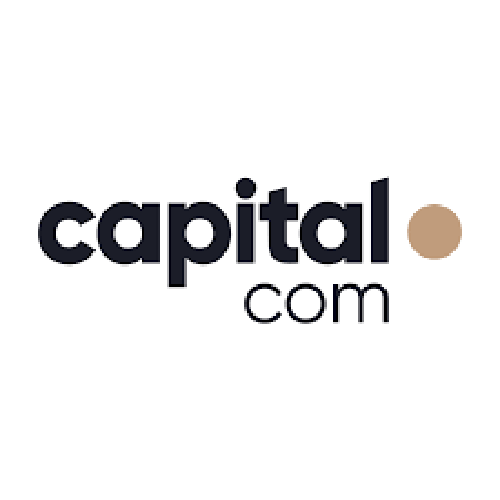
Capital.com is another online CFD and stock broker designed specifically for experienced investors. The site

HYCM was established in 1972 as a gold and silver trader in Hong Kong, and

Best for: Experienced traiders With over 2,000 stocks, Plus500 is an easy-to-use platform with lots of educational material,

Best for: Experienced traders IG is regulated by the FCA and BaFIN in Germany. It is

Best for: Forex trading Established in 1999 and owned by Jefferies Financial Group, FXCM is both

Best for: Tight spreads and low fees Pepperstone requires no minimum deposit and offers low trading fees.

Vantage FX was founded in 2008 to be a transparent forex broker and has grown
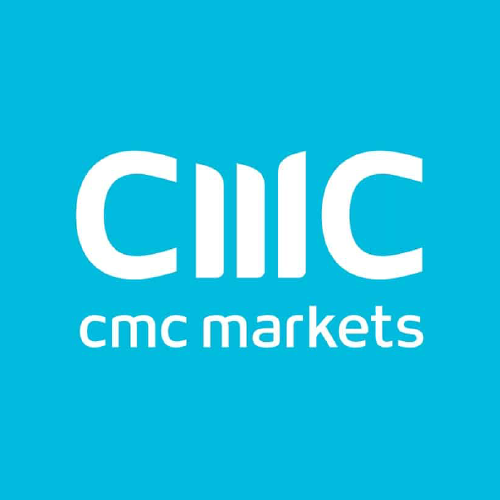
Best for: Research tools and advanced trading CMC Markets has received awards for having the best

Best for: Those who value easy account opening and free deposits and withdrawals IC Markets is

Best for: Zero commission and all-round broker eToro features include: Access to over 800 stocks No commission
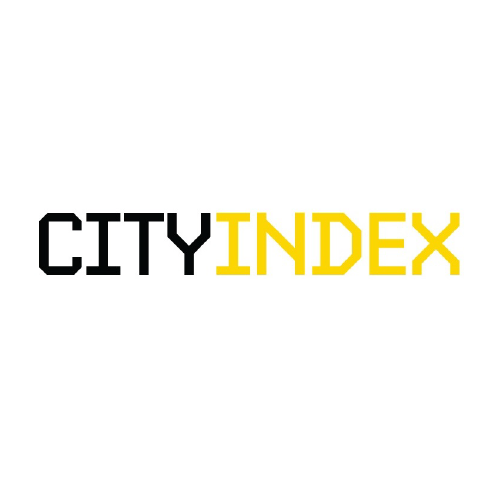
Best for: Spread betting City Index is an award-winning broker that offers low forex and stock
Want to Trade Online?
Easy Trading Platform
Copy Experienced Traders
Trade from Your Pocket
Trade with Liteforex
- Best Mobile App
- Free Trading Courses
- Low Fees
- Fast Execution
- 24/7 Customer Support
CFD Trading on financial markets carries risks. Before deciding to trade, you need to ensure that you understand the risks involved.





